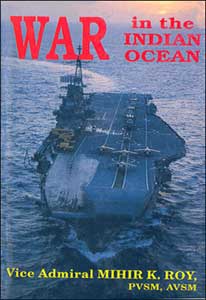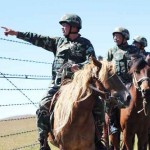The inland river ports of Chandpur, Naranganj, Daudkhandi, Barisal, Phulchari Ghat, Khulna, Goalundo Ghat, Nagarbari, Jalakatti. Ashuganj and Jamalpur tactically linked the major military cantonments of Dacca, Comilla, Syhlet, Jessore, Rangsur, Rajshahi, Bogra, Khulna and Chittagong. The logistic requirements for these cantonments were the transportation of two lakh tons of cargo and 1.5 lakh personnel. The requirement doubled by mid-1971 because of the reinforcements being flown in via Sri Lanka. Overflights over India were banned when an Indian Airlines Fokker aircraft was hijacked and blown up at Lahore airport in January 1971 which incident’ was well covered by the Pakistan television and press.
The following draughts in the riverine transport system were the controlling factor for routing vessels.
The preoccupations of Naval Headquarters hence continued with the induction of the three Daphne class submarines and their support facilities together with the problem of malfunctioning torpedoes and the overdue refit of Ghazi.
- Chittagong-Narayanganj – 12 feet (last quarter – October to December) – 9 feet.
- Naranganj to Bhairab – 9 feet.
- Bhairab to Sylhet – 4 to 5 feet (draught increases during monsoons) .
- Narayanganj-Goalundo-Aricha upto Jumna river (Padma route) – 6 feet.
- Narayanganj to Khulna (Madhumati river) – 6 feet.
- Narayanganj via Koche route – 12 feet.
Railways and roads of East Pakistan
The waterways were the prime arteries for transport particularly in the South. Nevertheless there were 2700 km of railways in East Bengal. The principal rail routes were
- Dacca to Chittagong.
- Dacca to Sylhet.
- Dacca to Darsana with a ferry service between Jaganath Ghat and Serajganj Ghat.
- Dacca to Khulna with a ferry service.
- Dacca to Rajshahi with a ferry service.
There were also 1948 km of all weather roads in East Pakistan. Hence, while the Mukti Fauj attacked the railways, roads and bridges, the frogmen concentrated on ports, inland harbours, ferries, pontoons, buoyage and all types of vessels.
Naval Headquarters, Karachi
| Editor’s Pick |
Nonetheless with dark clouds of insurgency building up in East Pakistan, Naval Headquarters at Karachi were confident that the Pakistan Army would bring their Eastern wing under control. The preoccupations of Naval Headquarters hence continued with the induction of the three Daphne class submarines and their support facilities together with the problem of malfunctioning torpedoes and the overdue refit of Ghazi. Meanwhile, a replacement programme for the frigates revolved round the acquisition of three Vosper Type 21 frigates which was however more theoretical than practical as the ‘forgotten Navy’ had not been allotted the necessary funds. In a brief flirtation with the Soviet Navy in 1968, Pakistan Naval Headquarters communicated a requirement for four Foxtrot class submarines, five Kynda class destroyers and 8 Komar missile boats. Ayub Khan only approved the missiles boats which curiously were rejected by the Pakistan Navy.1
 In the meantime, Karachi was harried by signals from Commodore Commanding East Pakistan (COMCEP) for personnel, patrol craft, fuel, spares and urgent strengthening of the naval forces in the East as the Army required naval flotillas not only to transport stores, personnel and fuel but also to provide the ground force with strategic and tactical mobility. They also needed an amphibious element for riverine tasks. In addition, they requested the Navy to take over port operations and the inland waterway transport in view of the rising tempo of insurgency compounded by the desertion of Bengali personnel.
In the meantime, Karachi was harried by signals from Commodore Commanding East Pakistan (COMCEP) for personnel, patrol craft, fuel, spares and urgent strengthening of the naval forces in the East as the Army required naval flotillas not only to transport stores, personnel and fuel but also to provide the ground force with strategic and tactical mobility. They also needed an amphibious element for riverine tasks. In addition, they requested the Navy to take over port operations and the inland waterway transport in view of the rising tempo of insurgency compounded by the desertion of Bengali personnel.



